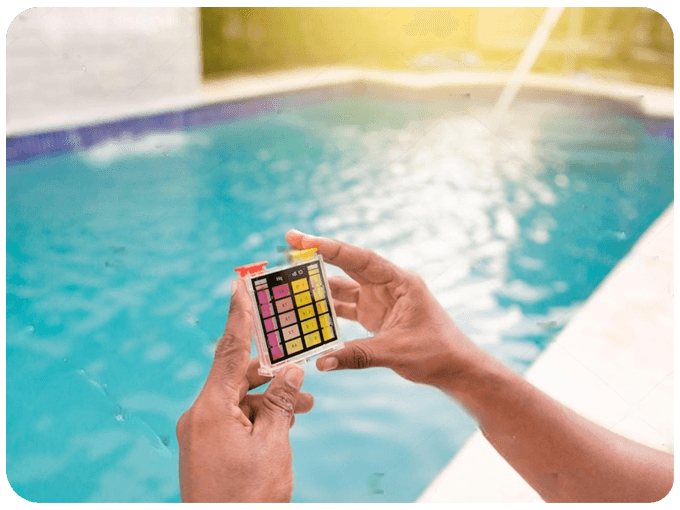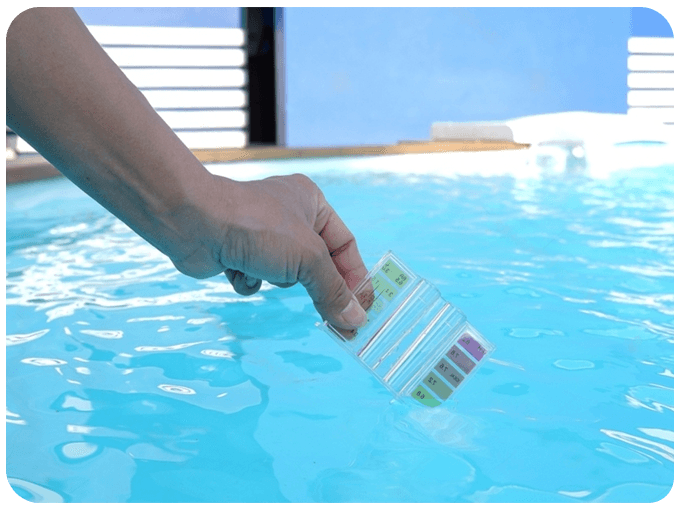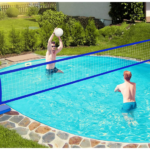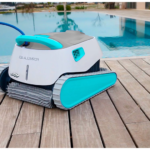Maintaining water balance in a fiberglass pool is essential for ensuring the longevity of the structure and an optimal swimming experience. In this article, we’ll explore the importance of pH regulators and their key specifications designed specifically for fiberglass pools.
The pH of pool water directly impacts pool health and swimmers’ comfort. pH regulators are essential tools for maintaining balanced levels, avoiding issues like eye irritation and damage to fiberglass.
Table of Contents
Advantages of Using pH Regulators
- Water Balance Maintenance: pH regulators help maintain the water’s pH within optimal levels, crucial for swimmers’ health and the effectiveness of water treatment chemicals.
- Prevention of Corrosion Issues: Balanced pH prevents corrosion of pool components like ladders, fixtures, and filtration systems, extending the life of the fiberglass pool.
- Chemical Effectiveness: Balanced pH ensures that chemicals used for disinfection and water cleanliness are more effective, reducing the need for chemicals and long-term maintenance costs.
- Prevention of Skin and Eye Irritations: Balanced pH helps prevent skin, eye, and mucous membrane irritations among swimmers, enhancing the swimming experience and reducing health complaints.
- Reduction of Algae and Bacteria Growth: Proper pH discourages algae and bacteria growth in the water, meaning less maintenance and cleaning needed to keep the pool clean and safe.
- Compliance with Safety Regulations: Maintaining a balanced pH is fundamental to keeping a safe pool and complying with local water quality and pool safety regulations.

Key Specifications of pH Regulators
A. Presentation Form
- Concentrated Liquids: Easy to dose and quickly mix with pool water.
- Tablets and Powders: Offer convenience and are ideal for controlled dosing.
B. Fiberglass Compatibility
- Regulators must be compatible with fiberglass materials, avoiding damage or unwanted reactions.
C. Product Stability
- Regulator stability ensures consistent pH correction and prevents unwanted fluctuations.
Types of pH Regulators
- Liquid pH Regulators: These come in liquid form and are added directly to the pool water. They typically consist of muriatic acid (hydrochloric acid) or sulfuric acid to lower pH, and sodium carbonate or sodium bicarbonate to raise pH. They are easy to use and can be accurately dosed.
- Granular or Powder pH Regulators: These come in granular or powder form and dissolve in water before being added to the pool. They are also used to adjust pH up or down as needed. They are often more concentrated than liquids and may be more suitable for large pools.
- Automatic pH Dosing Systems: These automatic systems are designed to continuously monitor water pH and adjust it automatically as needed. They use dosing pumps and sensors to maintain pH balance constantly without manual intervention.
- pH Regulator Tablets or Cartridges: These come in tablet or cartridge form placed in a floating dispenser or dosing chamber in the pool. They dissolve slowly in water and release chemicals necessary to maintain pH in the desired range.
Choosing the Right pH Regulators for Pools
A. Pool Size
- Select a regulator based on your pool’s water volume to ensure precise adjustments.
B. pH Type
- Some regulators are designed to raise pH, while others lower it. Choose based on your pool’s specific needs.
C. Application Preferences
- Consider whether you prefer the convenience of tablets, the quickness of liquids, or the automation of electronic devices.

Using pH Regulators for Pools
- pH Testing: Before adding any pH regulator, it’s important to regularly test pool water pH using a pool-specific water quality test kit. These tests will determine if water pH is within the desired range, typically between 7.2 and 7.6 for pools.
- Adjusting pH Up or Down: Depending on pH test results, you may need to adjust water pH up or down. If pH is too low (below 7.2), you’ll need to raise it using a pH regulator containing sodium carbonate or sodium bicarbonate. If pH is too high (above 7.6), you’ll need to lower it using a pH regulator containing muriatic acid or sulfuric acid.
- Proper Dosing: Follow manufacturer instructions to dose the pH regulator properly. This usually involves adding the recommended amount of product to the pool water based on water volume and the amount of adjustment needed.
- Mixing and Distribution: Once you’ve added the pH regulator to the pool water, ensure thorough mixing so it’s evenly distributed throughout the pool. You can do this using a brush or cleaning accessory to move water around the pool.
- Post-Testing: After adding the pH regulator, wait at least a few hours and then perform additional water pH tests to ensure it has reached the desired range. If necessary, repeat the pH adjustment process until desired results are achieved.
- Regular Maintenance: It’s important to regularly test pool water pH and adjust as needed to maintain proper balance. This will help prevent issues like skin and eye irritation, pool component corrosion, and algae and bacteria growth.
FAQs about pH Regulators for Pools
- How often should I adjust my pool’s pH?
- It’s recommended to check and adjust pH weekly to maintain consistent levels.
- Can I mix different types of pH regulators?
- It’s not recommended, as this can cause unwanted chemical reactions. Use only one type at a time.
- Are automatic regulators difficult to install?
- Installation is usually straightforward, but follow manufacturer instructions or seek professional help if needed.
- Is it safe to swim immediately after adding a pH regulator?
- Most regulators allow immediate use after application, but follow specific product instructions.
- Are eco-friendly regulators as effective as traditional chemicals?
- Yes, many eco-friendly regulators are equally effective and offer the advantage of being environmentally friendly.
Conclusion
pH regulators are essential allies in fiberglass pool maintenance. By maintaining water balance, not only is the pool preserved, but a comfortable and healthy swimming experience is ensured.


